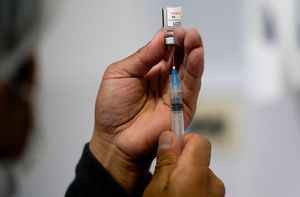
The third patient infected with avian influenza through cows in the United States has raised greater concerns about the spread of the virus.
Some experts have argued that measures must be taken to prevent the virus from mutating, leading to human-to-human transmission.
According to The New York Times, a third case of human infection with highly pathogenic avian influenza (H5N1) emerged in Michigan, United States.
The Michigan Department of Health and Human Services reported that unlike the previous two patients, who only showed symptoms of conjunctivitis, this patient exhibited respiratory symptoms such as coughing and sore throat.
The US Centers for Disease Control and Prevention (CDC) clarified that while all three cases have sporadically occurred and the H5N1 virus has manifested as respiratory symptoms, there are no signs of it spreading from person to person.
Nirav D. Shah, the CDC’s Principal Deputy Director, stated about this case, “The respiratory symptoms we are seeing in this individual are what we expected,” and explained that we need to remain vigilant as H5N1 can manifest in more than one way, just like other viruses.
However, the CDC pointed out that discovering respiratory symptoms does not mean the virus has become more dangerous, suggesting that the symptoms may have occurred from inhaling infectious aerosols during contact with the infected cows.
Furthermore, Dr. Natasha Bagdasarian, the Chief Medical Executive for the State of Michigan, pointed out that both patients in Michigan who contracted bird flu did not wear full personal protective equipment (PPE) at the time of infection.
“With the first case in Michigan, eye symptoms occurred after a direct splash of infected milk to the eye,” Dr. Natasha Bagdasarian, chief medical executive, said in a statement. “In this case, respiratory symptoms occurred after direct exposure to an infected cow. Neither individual was wearing full personal protective equipment (PPE). This tells us that direct exposure to infected livestock poses a risk to humans and that PPE is an important tool in preventing spread among individuals who work on dairy and poultry farms.”
She further stressed that “we have not yet seen signs of person-to-person transmission” and “the health risk to the general public remains low.”
The CDC is currently monitoring about 220 people due to the possibility of virus exposure. It is conducting blood tests to confirm the number of workers who have antibodies to the H5N1 virus.
It also recommended that dairy workers wear PPE to reduce the risk of infection.
Shah stated, “Previously, we focused on the importance of eye protection considering conjunctivitis,” adding, “This case supports the importance of masks and other barrier equipment for dairy workers who work with infected cows.”
However, some experts are expressing concern about the possibility of human-to-human transmission due to additional bird flu infections and the emergence of respiratory symptoms.
Seema Lakdawala, Associate Professor of Microbiology and Immunology at Emory University in Atlanta, said, “Every time the virus can replicate in humans, it adapts to humans,” and emphasized, “It can acquire molecular characteristics for replication in the respiratory tract and has the potential to spread person-to-person.”
Lakdawala further argued that more measures must be taken to protect farm workers and the public.
She asserted, “The nation should make the stockpiled vaccines available for veterinarians and dairy farm workers,” and raised his voice, saying, “It’s an opportunity to reduce human infection, and it should be implemented right now.”
Meanwhile, avian flu was first discovered in alpacas raised on some farms in Idaho, USA.
On May 29, the US Department of Agriculture (USDA) announced, “The alpacas that tested positive for bird flu had close contact with infected poultry with highly pathogenic avian influenza (HPAI),” and “out of 18, 4 contracted H5N1 infection.”
“The virus found in alpacas is the same sequence currently circulating in dairy cattle,” it added.










Most Commented